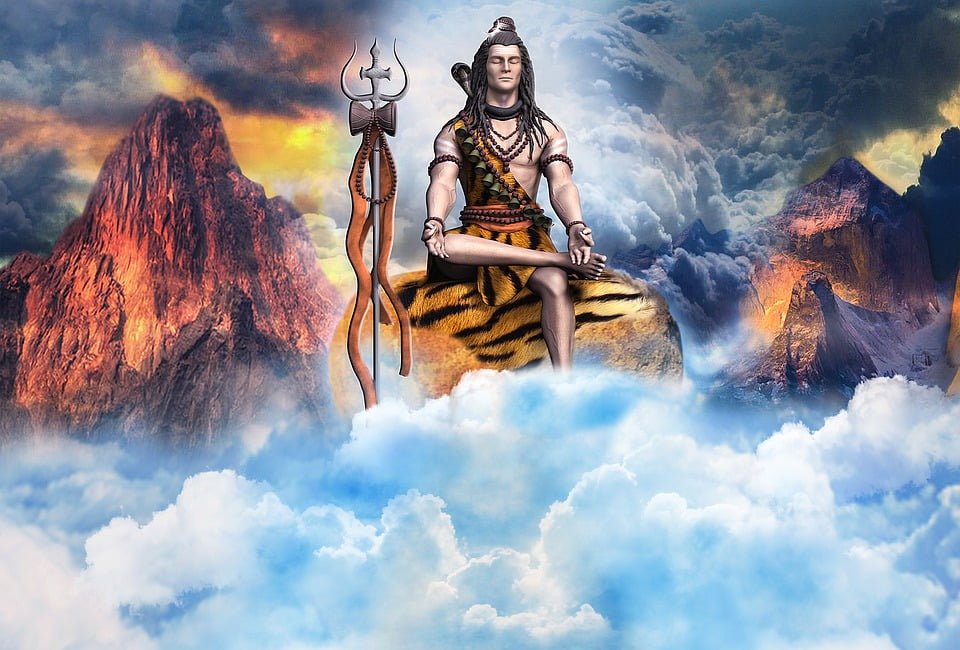Mahashivratri is a prominent Hindu festival, that mainly occurs in February or March, depending on the Amavasya night in Falguna month. On this mystical night, legends speak of Lord Shiva’s cosmic Tandava dance representing the cycle of life. To honor Lord Shiva, his devotees around the world observe Mahashivratri fast and prayer rituals with utmost devotion.
Quick Navigation
What are the rules of Mahashivratri fasting?
Along with spiritual preparation, our physical body also needs some planning to survive the day-long fast happily. Following the Mahashivratri fasting rules aids internal cleansing and spiritual growth. The fast cleanses accumulated toxins, rejuvenates the body, calms the mind, and brings one closer to Lord Shiva. With the proper fasting rules, Mahashivratri vrat can be completed successfully.
- Get up early and have a bath, ideally during Brahma Muhurat. Wear clean clothes to maintain purity.
- To cleanse the body and mind, avoid grains, lentils, and stimulants during the Mahashivratri fast.
- Maintain celibacy and refrain from intoxicants, focusing wholly on prayer.
- Stay awake past midnight and continue praying, chanting mantras, and reciting holy texts through the midnight hours.
- Understand the significance of Mahashivratri, break the fast on the following day after performing rituals in the morning. The first thing eaten after breaking the fast should be fruits.
- Try to keep your mind calm, stress-free, and focused on spiritual activities day and night. It would be best if you did meditation.
What to eat during Shivratri Fasting?
Headaches, lethargy, cravings, and acidity can spoil our devotion. That’s why we must carefully plan what foods to eat so that the fast seems effortless. Here are some of the foods you can eat during a fast:
Fruit Power to Rescue
When fasting, raw fruits are our best friends. Fruits are naturally cleansing and energizing and suit our digestive system perfectly. Kickstart your fast with refreshing papaya or pineapple in the morning. Their magical enzymes will gently digest any previous heavy meals.
As the day progresses, snack on energizing fruits like bananas, juicy apples, ruby pomegranates, and hydrating melons. The natural sugars kick in quickly to revive energy. Fruits provide the stamina we need to chant, pray, and stay awake through the night.
Nourishment from Nuts and Seeds
Crunchy nuts and seeds make fasting recipes more wholesome, providing protein and healthy fats. You can sprinkle almonds on fruits while munching on roasted peanuts, pumpkin, and sunflower seeds through the fast. They keep hunger pangs away for hours.
Flax, sesame, and melon seeds are great toppings for fruit bowls. Mini energy bars made from dates and walnuts instantly boost when you feel tired. Roasted makhana with a dash of spice can be your favourite crispy snack during Mahashivratri fasting.
You can take any of these food items while fasting. But there are some delicious Mahashivratri fasting recipes for food items to help you cook them.
Fasting recipes
The key to choosing fasting recipes is to avoid grains and switch to light, nourishing recipes. It is a practice that people avoid dairy, rice and wheat during fasting.
Sabudana Khichdi
Ingredients:
- 1 cup sabudana (sago pearls)
- One potato, chopped
- 1/4 cup peanuts
- 1 tbsp ghee
- Pinch of asafoetida, red chili powder, cumin powder, and coriander leaves
Method:
Soaking sabudana in enough water is vital to soften the pearls perfectly. Add chopped green chilies and curry leaves in hot oil for tempering. Then sauté the drained sabudana pearls, diced potatoes and roasted peanuts. Sprinkle rock salt and tangy lemon juice. Tossing everything together on a low flame binds the khichdi beautifully. Garnish with chopped coriander leaves. The medley of flavors and textures makes this comforting sabudana khichdi a soulful delight.
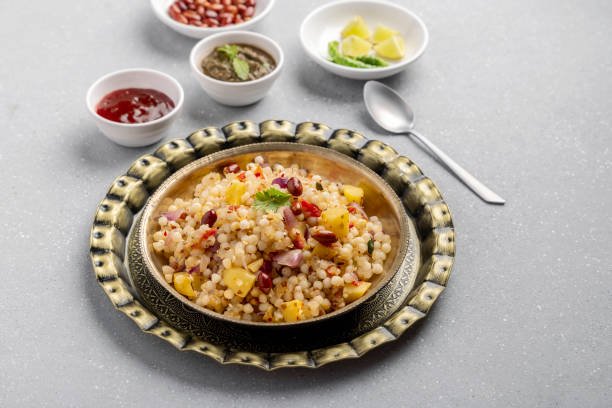
Makhane Ki Kheer
Ingredients:
- 1 cup foxnuts (makhana)
- 2 cups milk
- 1/4 cup sugar
- Few saffron threads, chopped nuts & dry fruits
Method:
Dry roast and peel makhane. Boil milk, add sugar and makhane. Let simmer on low flame till thick, stirring occasionally. Makhanes absorb milk wonderfully. Garnish with saffron and nuts for texture and taste. Enjoy the comforting, sweet Kheer.

Carrot and Cucumber Raita
Ingredients:
- 1 cup yogurt
- 1/2 cup grated carrot
- 1/2 cup finely chopped cucumber
- 1/4 tsp roasted cumin powder
- Pinch of rock salt
- 1/4 tsp chaat masala
Method:
Whisk the yogurt lightly until smooth. Then, you must mix all the ingredients perfectly. Finally, refrigerate the mixture and enjoy it chilled after some time.
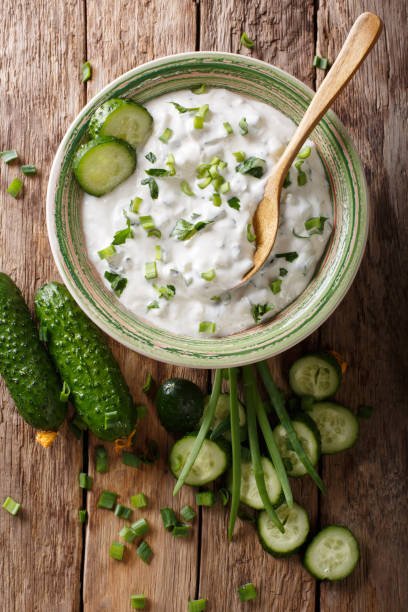
Lemonade
Ingredients:
- Water
- Lemon juice from 2 lemons
- 2 tsp sugar
- A few mint leaves
Method:
Squeeze lemons to extract their fresh juice. Add juice to a glass, then pour water based on your preferred tartness. Dissolve sugar well so it blends smoothly. You can also add a few mint leaves for a soothing aroma. Then, pour the drink into a jar and enjoy it. It is a refreshing thirst quencher during the fast.

Lassi
Ingredients:
- 1 cup curd
- 1 cup water
- Salt and sugar to taste
Mint leaves and roasted cumin powder for garnish
Method:
You must first whisk curd to retain its freshness rather than use store-bought curd. Blending thick, creamy curd with water makes it light and drinkable. A pinch of salt brings out the tanginess. Add one or two teaspoons of sugar as per your preference for sweetness. After pouring into a tall glass, sprinkle roasted cumin and mint leaves. The cooling lassi perfectly balances spicy fasting dishes. It rehydrates the body and provides much-needed probiotics.

Pumpkin Halwa
Ingredients:
- 2 cups pumpkin puree
- 1⁄2 cup milk
- 1⁄2 cup sugar
- cardamom powder
- Ghee for cooking
- Cashews and raisins for garnish
Method:
Roast pumpkin pieces in ghee till soft, then mash them into a smooth puree. Add this puree to simmering milk, transforming it into a rich, saffron-hued halwa scented with cardamom. Continuous stirring prevents burning and brings together beautiful flavours. Then sprinkle chopped cashews and raisins, which lend crunch. The irresistible halwa is a perfect festive dish, instantly warming the body and soul.

Kuttu ki poori/paratha
Ingredients:
- 1 cup kuttu ka atta
- 1⁄4 cup curd
- 1 tbsp oil
- Water to knead dough
- Ghee for roasting
- Rock salt to taste
Method:
Knead a light, fluffy poori dough with kuttu atta, curd, and water. Then add a dash of ajwain for easier digestion. Pinch small poori balls and roll them out swiftly. The pooris instantly puff up when fried in hot ghee, turning golden and crispy. You can sprinkle rock salt and relish the pooris with potato curry. For parathas, roll out larger circles, cook on tawa and smear ghee or curd.

Sabudana Vada
Ingredients:
- 1 cup soaked sabudana
- One medium potato boiled & mashed
- 1⁄2 tsp cumin seeds
- Salt to taste
- Oil for deep frying
Method:
Soaking sabudana overnight in enough water is critical to soften it perfectly. Add the drained sabudana to mashed potatoes along with cumin seeds and salt. Mix everything and form a soft dough for vadas. Make lemon-sized balls, flatten them and make a hole in the centre for even cooking. Deep fry in hot oil until the vadas turn crispy and golden. The combination of creamy potato and pearls of sabudana is delicious. These vadas make perfect snacks during fasts.
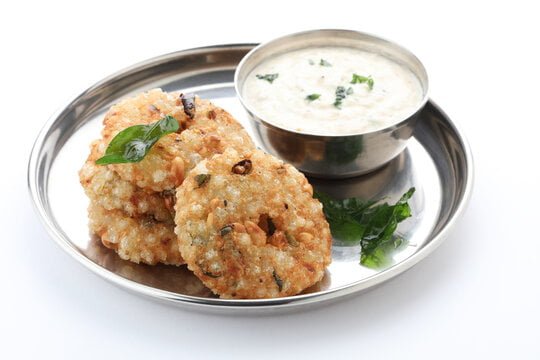
Singhada (Water Chestnut) Halwa
Ingredients:
- 2 cups Singhada flour
- 1 cup sugar
- 1 cup water
- 1 cup milk
- Ghee for cooking
- Green cardamoms
Method:
This unique halwa made from singhara atta or chestnut flour is a favourite festive dessert in different families. Roast the flour in ghee and enhance its nutty aroma. Add sugar syrup followed by milk to form a thick batter as it cooks. Stir constantly to prevent burning. The garnishing of crushed cardamoms takes the halwa to the next level. The rich, creamy, aromatic texture melts in the mouth, leaving blissful sweetness.
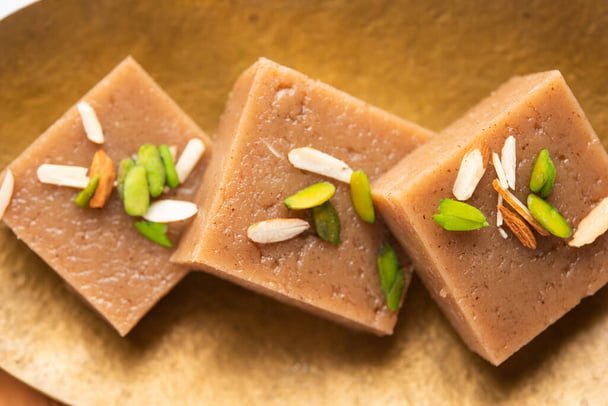
Banana and Almond Milkshake
Ingredients:
- One ripe banana
- Ten almonds, soaked
- 1 cup milk
- 1 tsp honey (optional)
Method:
This energizing milkshake can be your go-to breakfast during fasts. Blend peeled banana, soaked almonds and cold milk till smooth. The almonds add protein and nutrients, while the banana lends natural sweetness. You can add a teaspoon of honey for extra sweetness if needed. Pouring the thick, creamy milkshake into a chilled glass and topping with sliced almonds is the final touch.
These healthy and filling Mahashivratri fasting recipes will energize you through your vrat. With the right combination of fasting rules and suitable homemade foods, Mahashivratri fast can help detoxify your body.

A blissful night of devotion
Virtual pujas are an excellent option for those unable to be physically present. Staying mindful through simple daily rituals at home also helps establish a connection. The night showcases the magnificent glory of Lord Shiva, who is both destructive and constructive in equal measure. His influence heralds a positive change in the lives of thousands who seek refuge in him. As we prepare to welcome this auspicious day, may the blessings of Mahadev forever illuminate our journey ahead.
At AvaniGo, we are passionate about India and its mesmerizing culture. We intend to share the greatness of Indian culture through our articles. To learn more about us and contribute to our website, email us at hello@avanigo.com.

